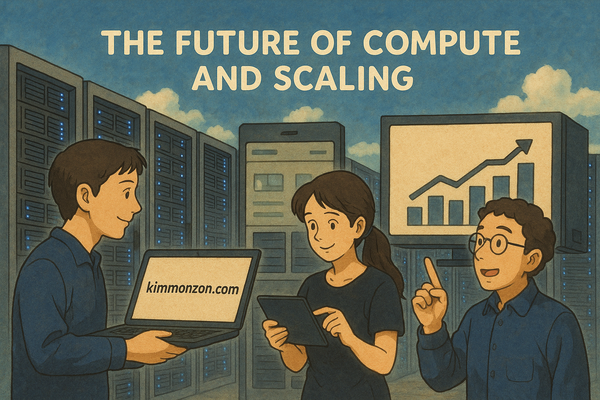Paralysis by Analysis

Have you ever found yourself buried in notes, website bookmarks, screenshots of ideas, or entries in software note applications, only to realize you've not acted on any of them? This is a classic case of 'Paralysis by Analysis'. It's a common pitfall in our quest for perfection, whether in technology, business, education, or personal growth. This blog post explores strategies to overcome this challenge, with practical examples to guide you.
The Paradox of Choice and Its Impact
The concept of the "Paradox of Choice," as coined by Psychologist Barry Schwartz, highlights that while an array of choices allows us to achieve objectively better outcomes, it paradoxically leads to greater anxiety, indecision, and dissatisfaction. This abundance of choice, coupled with the fear of making the wrong decision, often results in a counterproductive cycle of over-analysis.
Ironically, a simple Google search on "analysis paralysis" yields over a million resources, further illustrating the overwhelming nature of information accessibility. This deluge of data doesn't necessarily empower better decision-making; instead, it can lead to a state of perpetual hesitation.
How Overthinking Impedes Productivity and Creativity
Cognitive Overload: Overthinking consumes significant cognitive resources, diminishing our working memory's capacity to focus on tasks at hand. This cognitive strain can lead to decreased performance in complex tasks, as it occupies the mental space required for effective problem-solving.
- Creativity Block: A study by Stanford University suggests that over-analysis hampers creativity. The prefrontal cortex, associated with analytical thinking, when overly engaged, can stifle creative processes that are more active in less thought-intensive states.
- Willpower Depletion: Decision fatigue, as evidenced in studies such as the one examining parole board judges' decisions, reveals that constant decision-making exhausts our mental resources. This depletion of willpower affects our ability to make quality decisions, especially towards the end of a day or session.
- Happiness and Satisfaction: The constant pursuit of the best possible choice, or maximizing, often leads to less satisfaction and happiness. This is due to the heightened expectations and the inevitable comparison with potential alternatives that were not chosen.
Strategies to Overcome Analysis Paralysis
- Structured Decision-Making: Prioritize and tackle important decisions when your cognitive resources are at their peak. Minimize trivial decisions by turning them into routines or habits.
- Limit Information Intake: Approach research with specific goals and set limits to avoid getting overwhelmed. Techniques like single-tab browsing can significantly enhance focus.
- Set Deadlines: Use deadlines to enforce decision-making. Make these deadlines public or accountable to someone else to ensure adherence.
- Focus on Core Objectives: Align decisions with your main objectives or values. This clarity helps in making swift, decisive choices.
- Seek External Perspectives: Sometimes, discussing your options with others can provide clarity and prevent overthinking.
- Iterative Approach: Adopt a mindset of experimentation. Make decisions with the understanding that they can be refined based on feedback and results.
- Start Before You Feel Ready: Action often trumps perfect planning. Embrace a mindset of learning and adapting as you go.
- Commit to Your Decisions: Remember, the success of a decision often depends more on your commitment to making it work than on the choice itself.
The Examples?
- The Indecisive Developer: A developer torn between different programming languages. They could set a two-week deadline, experiment with both languages, and then decide based on their experience.
- The Hesitant Entrepreneur: An entrepreneur stuck overanalyzing market data for a new product could start with a small-scale launch. This approach provides real-world insights and reduces the risk of a full-scale launch.
- The Hesitant Artist: An artist overanalyzing their next project theme could start with a small piece, gather feedback, and then decide whether to expand it into a larger series.
- The Indecisive Student: A student unsure about which major to choose could set a deadline, research a few options, and then make a decision based on a combination of interest and job market trends.
- The Ambivalent Professional: Someone struggling to choose between two career paths could allocate a fixed period, such as a month, to explore both options. This might involve shadowing professionals in each field, researching, or taking introductory courses. The decision would then be based on which path felt more engaging and aligned with their long-term goals.
- The Undecided Homebuyer: A homebuyer unsure about the type of property to purchase could start by listing their non-negotiables, like location and budget. They could then visit a variety of properties within these parameters over a few weeks and make a decision based on which property feels most like a home.
- The Hesitant Traveler: Someone planning a vacation but unable to decide on a destination could narrow down their options based on key factors such as budget, climate preference, and travel duration. They could then randomly pick one of the top three choices or opt for the one that excites them the most at a gut level.
- The Indecisive Reader: A reader overwhelmed by their to-read list could select three books of different genres. They could then read the first chapter of each and continue with the one that captivates their interest the most.
- The Fitness Explorer: Someone unsure about which fitness regime to adopt could try out different forms of exercise for a week each – like yoga, cardio, and strength training. The decision could then be based on what they enjoy most and what fits their lifestyle.
- The Diet Dilemma: For those confused about which diet plan to follow, experimenting with different diets for a short period, while monitoring how their body feels, could be enlightening. The choice can then be based on personal well-being and ease of maintaining the diet.
- The Tech Enthusiast: When deciding between different gadgets or tech, one could first list down the must-have features and then try out a few top contenders, if possible. This hands-on experience, combined with online reviews, could guide the final decision.
- The Gardening Novice: Someone new to gardening and unsure what to plant could start with a small variety of seeds and observe which ones thrive in their garden’s conditions. This trial-and-error method can lead to a more informed and confident choice in the next planting season.
Reflecting on Your Unexplored Ideas
Think about the countless ideas sitting in your digital notes and bookmarks. Each one represents a potential path or decision you've postponed. It's time to sift through them, apply these strategies, and turn those ideas into action.
Paralysis by Analysis is a challenge that transcends professions and personal endeavors. By setting clear goals, managing information intake, and trusting in your capabilities, you can break free from the chains of inaction. Remember, success isn't just about making the right decisions; it's about making decisions and then making them right, learning and adapting as you go along.
In an era where information is abundant, the key to effective decision-making lies in balancing thorough research with timely action. By understanding the pitfalls of over-analysis and adopting strategies to streamline the decision-making process, we can enhance our productivity and overall satisfaction with our choices. Remember, sometimes the best way to deal with analysis paralysis is to simply take a step forward and adjust as you go.



